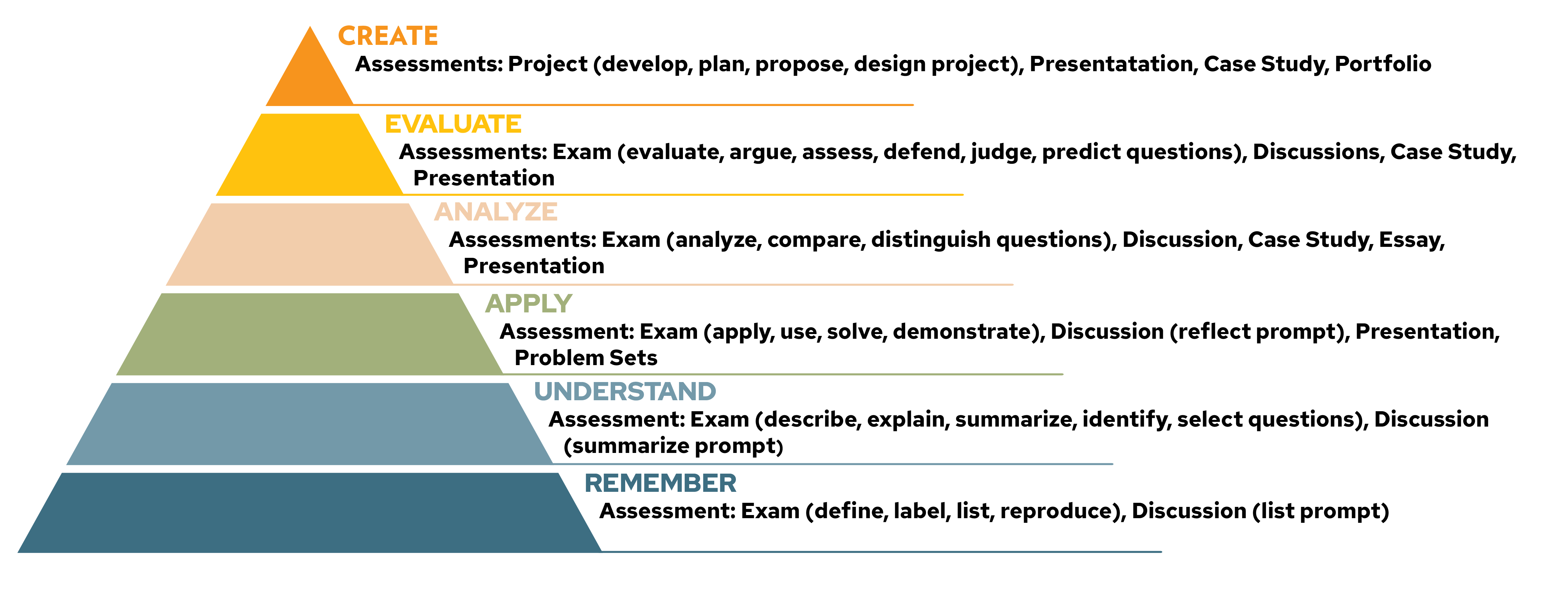Topics Map > Course Design > Student Assessment
Aligning assessments with learning outcomes
Introduction
A successful course starts with well-written learning outcomes that communicate clearly what students are expected to achieve through the course and how their learning will be assessed. The following steps can be used to ensure a clear assessment plan to guide students in their learning.
|
1) Review course learning outcomes
It is important to review your course learning outcome and ensure it is written in a way that shows it can be measured or observed in some way. Course learning outcomes should:
- state what students are expected to know or be able to do upon completion of a specific course;
- be clearly stated and relate specifically to the course's topics, assignments, exams, and other assessments;
- be observable and measurable;
- contribute, or map to, program-level learning outcomes; and
- be outlined in the course syllabus, reviewed with students at the beginning, and referenced throughout the course.
2) Determine target level of a course learning outcome
Using Bloom's Taxonomy list, identify each course learning outcome level. This is the final target of our assessment plan.

3) Identifying methods of assessment
The following are some examples of ways of measuring or assessing students' success in achieving the course learning outcome:

Assessment Activities
Each level of Bloom's Taxonomy assesses different kinds of knowledge. Below are examples of activities and questions that align with each level of learning
Remember
| Questions | Activities |
|---|---|
|
|
Understand
| Questions | Activities |
|---|---|
|
|
Apply
| Questions | Activities |
|---|---|
|
Analyze
| Questions | Activities |
|---|---|
|
Evaluate
| Questions | Activities |
|---|---|
|
Create
| Questions | Activities |
|---|---|
|
4) Develop an assessment pathway
Once the target level of a course learning outcome is identified and the final assessment methods are determined, the next step is to create an assessment pathway that assesses student performance from their starting level to their target level points in their assessment pathway. The assessment pathway should identify the level of knowledge with which students enter your course and the final level at which students exit your course. At each level, assessment activities should be identified to measure student performance at that level. See an example of a completed assessment pathway below.

Download the Assessment Alignment Handout
Identify starting point
Using the diagram below, mark your target level for your course learning outcome. Next, determine the level of knowledge students should be able to perform upon entering the course. This is your starting point. Review program curricular maps, course requirements, and prerequisites. If unsure, consider starting with some diagnostic assessment at the beginning of the course to confirm the accuracy of your decision.

Identify exit-level assessments
Each time students move from or exit one level to the next or higher level of learning, there is an opportunity to assess their performance or mastery of that level. This will give you and the student some feedback on their performance and identify any serious gaps in learning that prevent them from moving forward successfully to the next level. Using the diagram above, identify the activities in your course that will serve as exit-level assessments.
5) Share your assessment plan
The final step is to share this assessment pathway with your students. This will help them see how activities fit together and contribute to their success in achieving the specified course learning outcome. It will also help them see where there are opportunities to gain insight into their progress to their final assessments.
